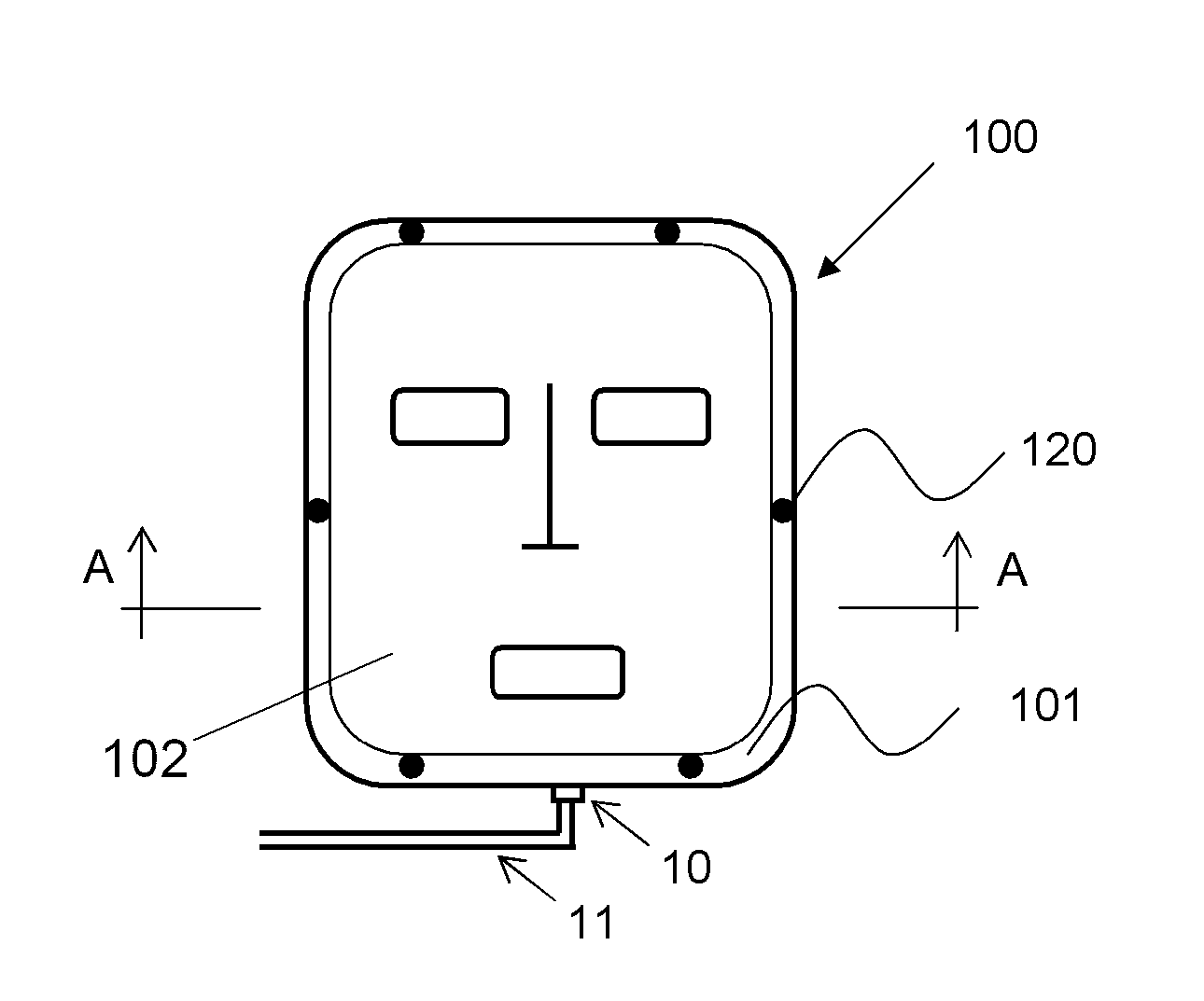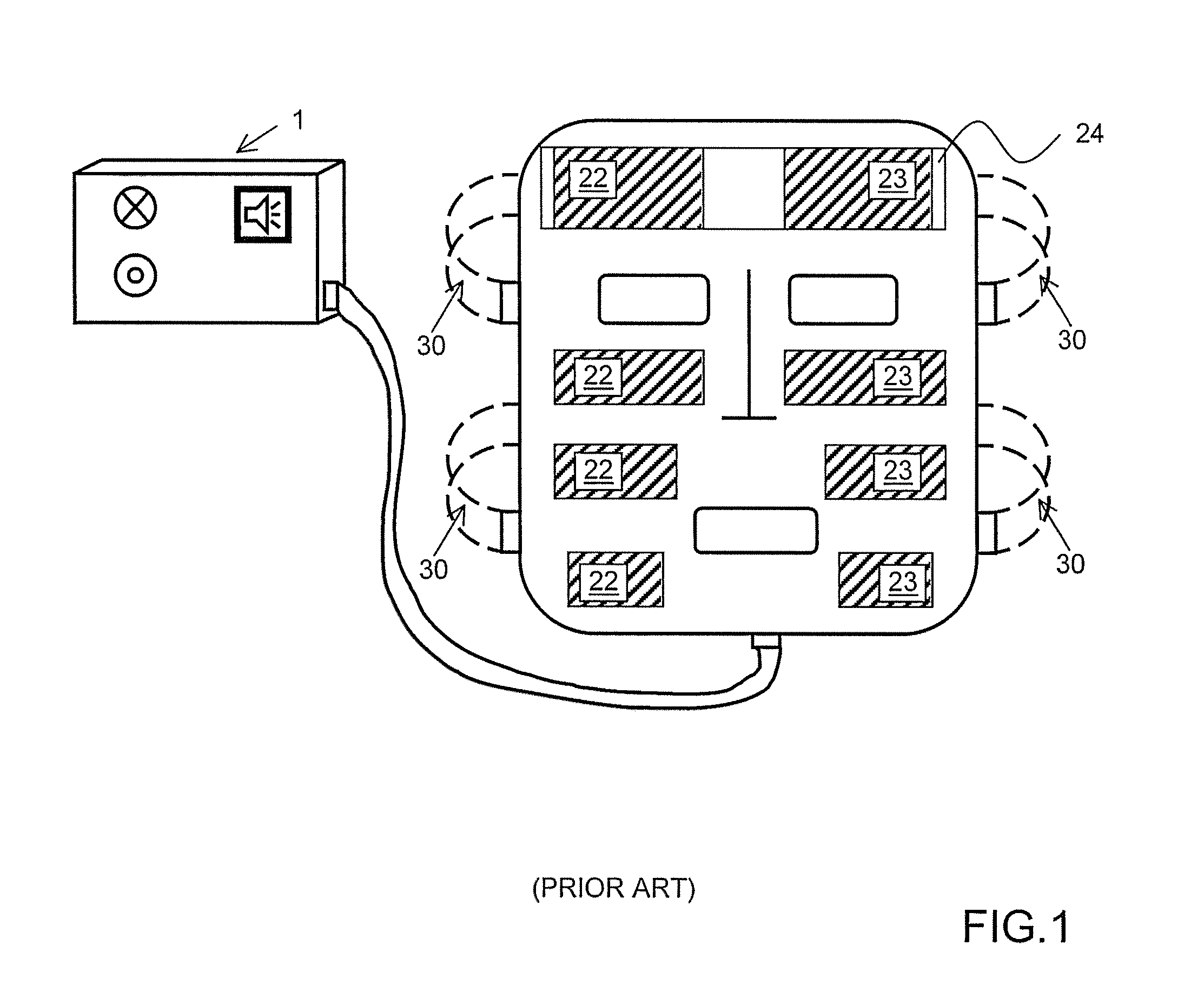Face mask
a face mask and mask technology, applied in the field of facial skin cleaning, can solve the problems of laborious and inconvenient strip fastening, uneven electric current distribution across the face to be treated, etc., and achieve the effect of cleaning the face skin and being easy to remov
- Summary
- Abstract
- Description
- Claims
- Application Information
AI Technical Summary
Benefits of technology
Problems solved by technology
Method used
Image
Examples
first embodiment
[0031]FIG. 3 shows a face mask 100 according to the present invention. In addition to the edge portion 101, the face mask herein comprises an isolation portion 110. The purpose of the isolation portion 110 is to prevent electric current from transferring between electrodes, instead of the skin, in the face mask 100. It is to be noted that the size and shape of the isolation portion may vary, depending on the shapes of the electrodes. The edge portion may also be made of a plastic material. In such a case, the uppermost plastic layer is larger than other layers. The face mask can be fitted onto the user's face by means of the stretchable uppermost plastic layer.
second embodiment
[0032]FIG. 4 shows a face mask according to the present invention. The face mask 100 is provided with two alignment portions 121 and 122. At the nose of the user, the face mask has a first alignment portion 121 provided with gripping means 120 for adjusting and fitting the face mask according to the nose of the user of the face mask. A second alignment portion 122 is provided at the chin of the user. The purpose of the second alignment portion is to adjust the mouth opening of the face mask at the mouth of the user. The width and length of the alignment portions may vary.
third embodiment
[0033]FIG. 5 shows a face mask according to the present invention. The face mask 100 is a partial face mask such that it covers a certain area of the face. The partial face mask disclosed herein covers a lower part of the face.
PUM
 Login to View More
Login to View More Abstract
Description
Claims
Application Information
 Login to View More
Login to View More - R&D
- Intellectual Property
- Life Sciences
- Materials
- Tech Scout
- Unparalleled Data Quality
- Higher Quality Content
- 60% Fewer Hallucinations
Browse by: Latest US Patents, China's latest patents, Technical Efficacy Thesaurus, Application Domain, Technology Topic, Popular Technical Reports.
© 2025 PatSnap. All rights reserved.Legal|Privacy policy|Modern Slavery Act Transparency Statement|Sitemap|About US| Contact US: help@patsnap.com



